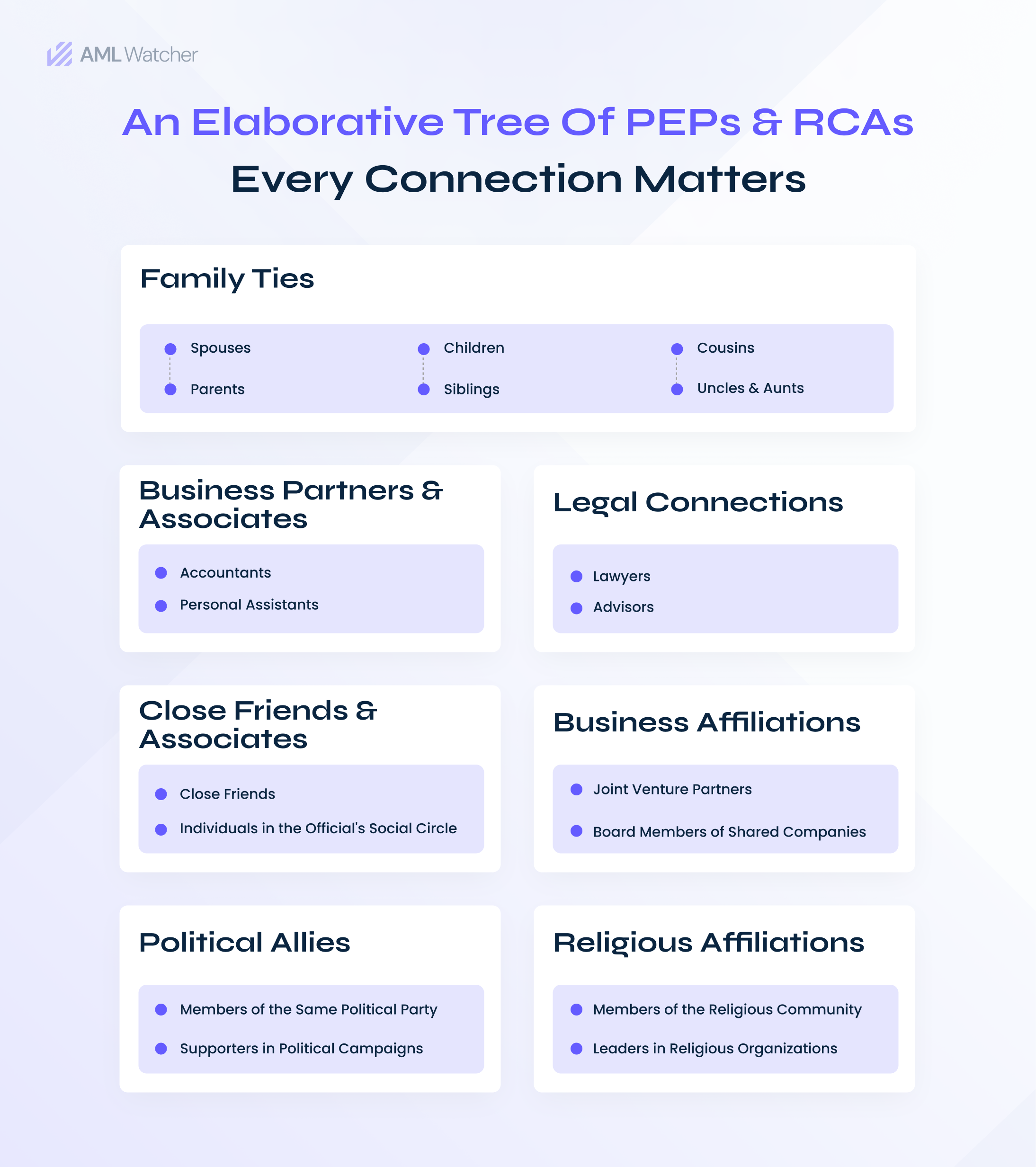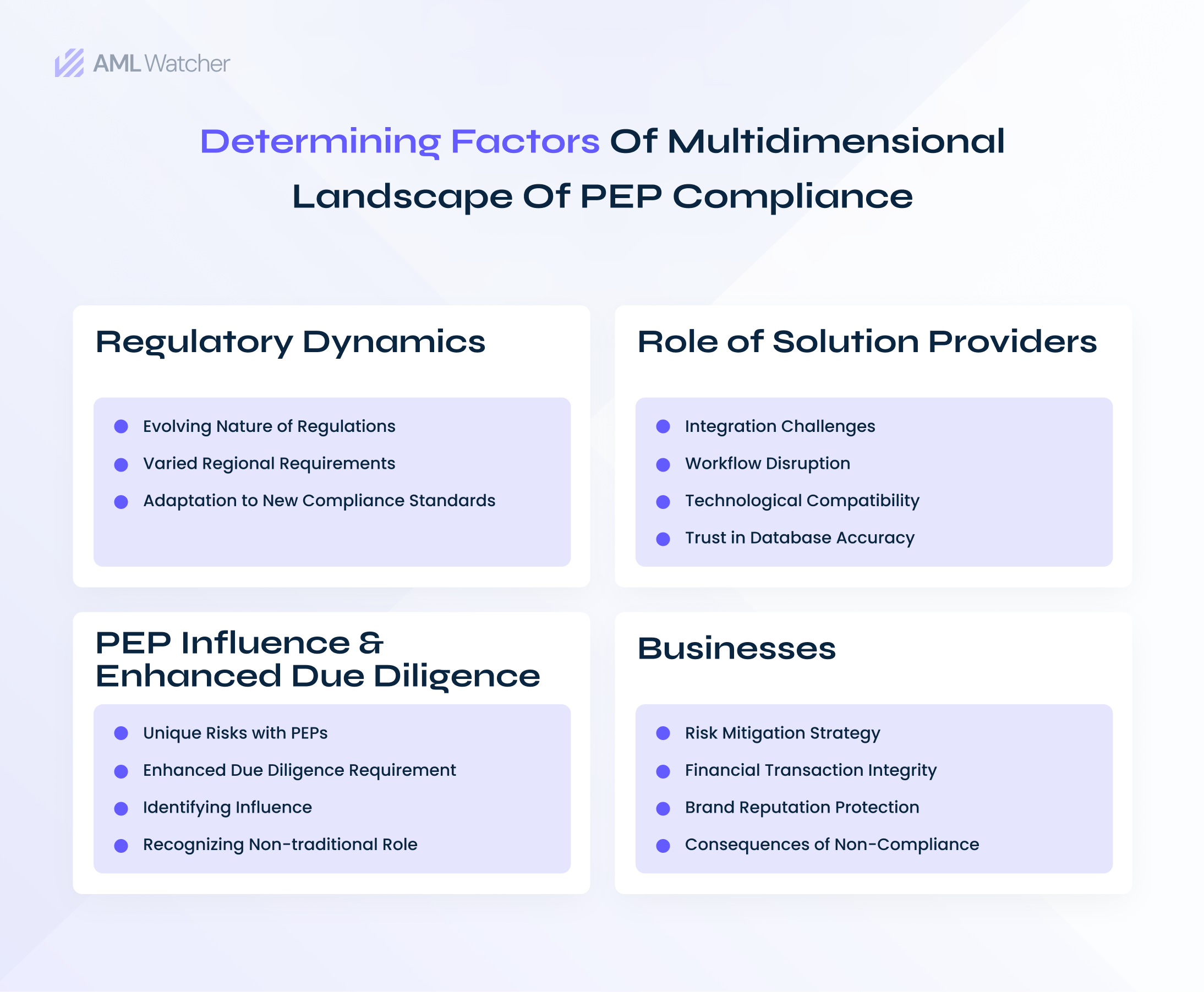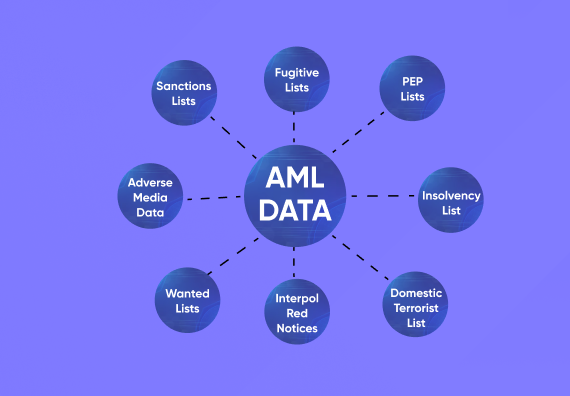
Navigate through Complex PEPs Network with PEP Screening
The association of money laundering with organized crimes is as old as the birth of anti-money laundering (AML) framework which became an integral weapon to fight against transnational and predicate crimes precisely tracing back to the 1900s. With no particular guidelines on addressing public corruption, the imperative need to outline and address the money laundering activities carried out by the publicly prominent figures or government officials and their influenced acquaintances who in the latest term are dubbed as politically exposed persons (PEPs).
Sustaining a corrupt economy on a global scale and exposing a pandora box of awful corruption cases, the year 2022 witnessed the Pandora Papers leak where millions of documents of money laundering and organized predicate crimes by politicians and corporate leaders were revealed. The leak having more magnitude than the Panama and Paradise papers makes me wonder if this unending trail of corruption by the powerful people could be nailed down where regulatory bodies and corruption actors are in a cat and mouse race.
Having PEPs as a client is not a bad thing but it’s all about onboarding one in a calculated and right way. In this virtual journey of compliance, together we will explore different dimensions of compliance checks against PEPs and where it lies in the regulatory map while what are the real world challenges of navigating the PEP risks in the world where artificial intelligence is slowly replacing human intervention.
Who is a politically exposed person?
With no prior and uniform definition of who can be a PEP, in 2001, the financial institutions particularly banks were advised to conduct thorough screening of individuals holding public offices and their immediate family and close associates while maintaining continuous monitoring as a part of enhanced due diligence, published by the Basel Committee on Banking Supervision.
Paving a defining route for who PEPs are, different authorities have established somewhat similar designation of individuals who hold prominent positions in the public offices and their relatives are considered as politically exposed persons. Not limited to one specific definition because of the complex nature of personal connections, PEPs are classified into different other terms as elaborated below.
Identifying the Intricate Connections of PEPs: Who are RCAs?
In order to meet customer due diligence requirements and AML compliance, institutions are directed to critically identify PEPs which according to said definitions are people assigned with public offices and operations, and people who are relatives and close associates (RCAs) with more vulnerability to commit money laundering crimes.
The RCAs are those individuals who are in close association with public office holders and can abuse the power association in contributing to public corruption. In some cases, we can classify this relationship in legal or business terms which crafts an intricate web of connections and eventually making the sound judgment on whom to apply PEP compliance, a misleading task. For engineering a better way for navigating the RCAs and their associated compliance risks, the following relations can be wrapped around the web.
- Family members including spouses, parents, children, siblings, cousins, and uncles and aunts
- Business partners or associates including accountants and personal assistants
- Legal connections including lawyers and advisors
- Close friends and people around officials
Once the identification of PEPs is done, half of the compliance burden gets reduced, handing over the compliance implications to PEP screening and monitoring with an established risk based approach.
What is PEP Screening?
Magnifying the global efforts in curbing money laundering and associated predicate crimes, the Financial Action Task Force (FATF) with a mission to outline global and standardized guidelines on employing due diligence, came to existence in 1989 with its infamous 40 Recommendations. Primarily focussed on drug related money laundering directives, the FATF in its annual review of so called recommendations introduced the term of PEP (politically exposed person) while advocating the financial institutions to draft and employ risk management measures where the status of a PEP should be identified and appropriate screening coupled with monitoring of such customers should be maintained.
Contributing to robust AML measures and endorsement of PEP screening, in 2015, the European Union Fourth AML Directive established a standard time span of 12 months for maintaining persistent monitoring of customer’s PEP status after leaving his public office.
PEP Risk Management: An Integral Component of Business Success
The success of business and in-house AML compliance measures relies on the effective management of risks posed by new and existing customers and their ability to commit financial crimes. There is no harm in saying that not all PEPs carry the same risks and neither all high risk profiles must be PEPs, which requires institutions to adopt a risk based approach while building a business relationship.
It is evident that onboarding a powerful client contributes to your business success and nobody wants to throw away the opportunity while adaptation of risk based strategy empowered with proactive screening protocols such as PEP list and adverse media checks enables businesses to get rid of troublemakers by not onboarding a potential money launderer. On the other hand, it ensures swift onboarding on a powerful client which can lead to the ultimate business success.
Debanking & PEP Risk Management
The intricacy of PEP risks and management can bring a business as prestigious as Coutts, a known UK bank subsidiary of NatWest Group, under the media coverage and controversy where an ex-politician and TV host Nigel Farage was turned down to keep a bank account.
In a trail of reviews, it was admitted that the decision to terminate the Brexit owner’s account was lawful, however, the bank faced serious allegations and criticism upon poor management of decisions and communication of the procedures to a high-risk client.
Having explained the cruciality of adopting a proactive and sound judgment to measure PEP risk and draft customers risk profiles, the way forward to meet regulatory demands is AML PEP screening which must address the following needs of impactful compliance.
Essentials of PEP List Screening: Multidimensional Analysis
Supplementing the existing measures to identify PEPs and their associated risks, the Harvard Law School proposed the creation of a global database which must contain PEP data from regional to international level on global scale. Let’s take a deeper dive into the real-world requirements and challenges of effective PEP list search including,
Four Dimensional Compliance Landscape
The effective employment of PEP list screening is greatly impacted by the always-changing regulatory requirements in jurisdictions, PEP search solutions providers, the intricate nature of PEPs identification and tracing down the potential risk associated with RCAs, and last but not least the compliance approach of businesses. A balanced strategy to identify the risks while integrating dynamic regulations and technology is integral to combat potential money laundering threats posed by high-risk profiles. Refinement of due diligence measures aligned with regulatory requirements and careful selection of solution providers is akin to threading a needle. Below is the comprehensive display of factors to be considered while exploring the different aspects of politically exposed persons screening.
How Crucial is it to Address the Transliteration and Regional Diversity in PEP Data Process?
The standard and pretty obvious required data for executing screening for politically exposed persons includes name, date of birth, country of political influence, public roles, service years, and current status of political position. However, when it comes to processing data through screening tools, transliteration issues surface while increasing the rate of false alarms or normally known as false positives. Integrating diverse languages and regional norms adopted for naming in screening a politically exposed person through name search can create blind spots for the compliance officer where one might end up draining the compliance resources while overlooking the actual threat.
Let’s try to understand it with a scenario where an Arabic name can be transcripted in many ways when it’s written in English which requires a robust and fully integrated screening mechanism to effectively find what you are looking for while filtering all the ambiguities.
What is Required to Enhance the Effectiveness of PEP Screening?
It has been believed that some basic and standard information of clients as mentioned above are sufficient to conduct effective screening then one might ponder on the fact that if screening a politically exposed person is such a cake then why institutions fail to effectively employ AML measures. When coupled with a risk based approach, incorporation of different factors including geographical and jurisdictional needs, adverse media and sanctions checks, PEP list screening offers a reliable solution to lessen the regulatory burden.
Where is the Future of PEP Screening Leading to?
From research and exploration to real time implementation of technology integration into screening tools have made it easy for businesses to meet global crime threats which is why the market value of AML screening tools is estimated to reach $6.8 billion by the year 2028. However, it seems alarming to solely rely on the technology unless artificial intelligence starts generating its own data which we might get to see in future, who knows. A delicate balance of human intervention and technology integration is the only way out to protect the financial ecosystem from crime actors.
How Does AML Watcher Make PEP Compliance Easy for you?
Aiming to make compliance easy and effective for businesses of all sizes, AML Watcher seamlessly integrates technology and research within the PEP screening tool while empowering it with biometric AML identification which allows you to make sound decisions with significantly reduced false positives.
In the complex environment of regulations and evolved predicate crimes, strengthening your compliance measures with simple and efficient screening tools is what AML Watcher is striving for. Visit our website and experience a live search tool to see how screening can be as easy as searching for that crime documentary you have been waiting to watch.
We are here to consult you
Switch to AML Watcher today and reduce your current AML cost by 50% - no questions asked.
- Find right product and pricing for your business
- Get your current solution provider audit & minimise your changeover risk
- Gain expert insights with quick response time to your queries




